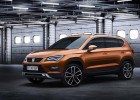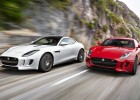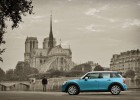Rolls boss drives China strategy
Ian Robertson, chairman of the legendary auto maker, says its cars have become symbols of achievement
China’s market for luxury autos is unlike any in Europe or North America, says Ian Robertson, chairman of Rolls-Royce Motor Cars.
There are complex regulatory challenges and different fashions but there is also a rapidly growing appetite for luxury goods, including high-end autos. And while sales of luxury cars still lag behind those in the West, the complex China market is of growing importance to the brands at the upper reaches of the industry, Mr. Robertson says.
BMW AG, whose brands include Rolls-Royce, BMW and Mini, recorded sales in China of 90,563 vehicles last year, far fewer than the 241,727 vehicles sold in the U.S.
“The American market is older and more established, with millions of drivers already in the premium segment and loyal to the brand,” says Mr. Robertson, who is also a member of the board of management at BMW responsible for group sales and marketing.
But China became the world’s largest car market by sales in 2009 and the growth in China’s appetite for luxury autos is compelling. It represents a boon for an industry that has faced serious challenges in other markets during the global financial downturn.
BMW’s sales in China jumped 37% last year, compared with a 25% to 30% decline in some markets. China is already the biggest market for BMW’s top-of-the-line 7-Series, by a factor of about two. Last year, the German auto maker said it will invest in a huge factory in Shenyang, China, expected to open in 2012, which will have an initial capacity of 100,000 cars a year.
“In February we sold 96% more cars in China than during [February 2009.] It could have been more, but we ran out of cars,” says Mr. Robertson.
BMW’s global rivals are well aware of the opportunities. Mercedes-Benz says its sales in China in February were up 160% compared with the same month in 2009. Volkswagen, owner of the Audi brand, reported a 61.7% jump in China sales for the period.
Mr. Robertson discussed his thoughts on the Chinese luxury-car market with William Snyder in Geneva during the International Motor Show The following interview has been edited.
WSJ: Why is China seeing such spectacular growth numbers while much of the world’s auto market tanked in 2009?
Mr. Robertson: Chinese consumers never changed their spending habits, even when the global financial meltdown hit. Consumers had total faith that the government had fixed the problem. That’s why they kept buying cars.
WSJ: What factors in China dictate your sales strategy?
Mr. Robertson: There’s an automotive hierarchy in China unlike any in Europe and North America. The 5-Series is a car for midlevel managers and the 7-Series is for executives—and you won’t ever see that line crossed. This hierarchy comes from a market still developing the middle and upper classes.
The 5- and 7- Series have become symbols of achieving “membership” in those demographics. We don’t see lines drawn like this in North America or Europe. It’s a lifestyle difference in these markets, whereas it’s a class difference in China.
WSJ: How are you appealing to that hierarchy?
Mr. Robertson: BMW has made design concessions to cater to the Chinese market. China is the only market that carries a 5-Series with a long wheelbase. [It was introduced in 2007.] The extended wheelbase creates a roomier backseat, making it comfortable enough to be an “arrival and departure car,” by which I mean a car with a chauffeur. We’re seeing more and more people wanting to drive themselves, but China is still a “driven-in” car market. We’re not just targeting the high-end buyer. I see segmentation increasing.
WSJ: BMW’s premium and tailor-made brand, Rolls-Royce, is also gaining popularity in China, surpassing Japan as its largest market in Asia and making up just over 10% of global sales in 2009. How does the Rolls-Royce market in China compare to the U.S. or England?
Mr. Robertson: Bespoke in the U.S. is more difficult because dealers believe they need on-lot stock. Americans don’t like to wait. It takes three to six months in China to deliver a Rolls-Royce and this has become a status symbol and selling point. The customers in China like to brag about how long it will take to build their cars.
WSJ: What worries you about China?
Mr. Robertson: We know where legislation will be in the U.S. over the next couple of years. But China may suddenly take huge regulatory steps to reduce carbon emissions or change safety regulations. We don’t have the legislative awareness like in other countries.
The 2009 truck law [that defined a truck as being longer than 5.9 meters (19.5 feet) and meant the standard Rolls-Royce Phantom could not cruise China’s city streets at night] is a perfect example. It took three months of engineering to adjust the Phantom’s length.
WSJ: Is China the main strategic focus for the BMW Group for the next few years?
Mr. Robertson: I believe the premium market in the U.S. still has the most potential. American buyers tend to replace their cars in the premium category, a pattern that hasn’t had a chance to develop yet in the newer Chinese marketplace.
Source article | Wall Street Journal by William Snyder




















